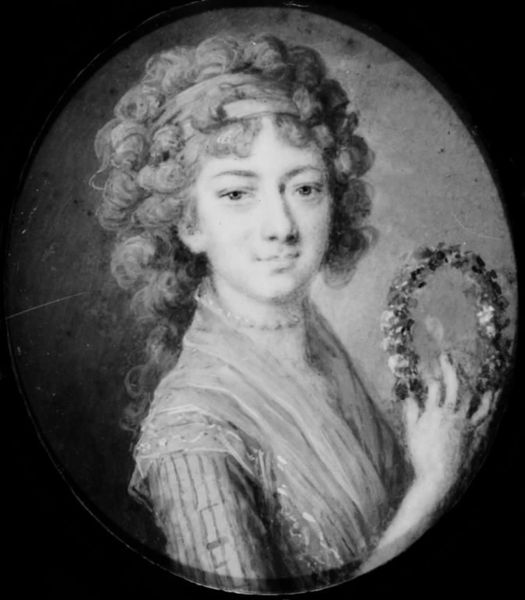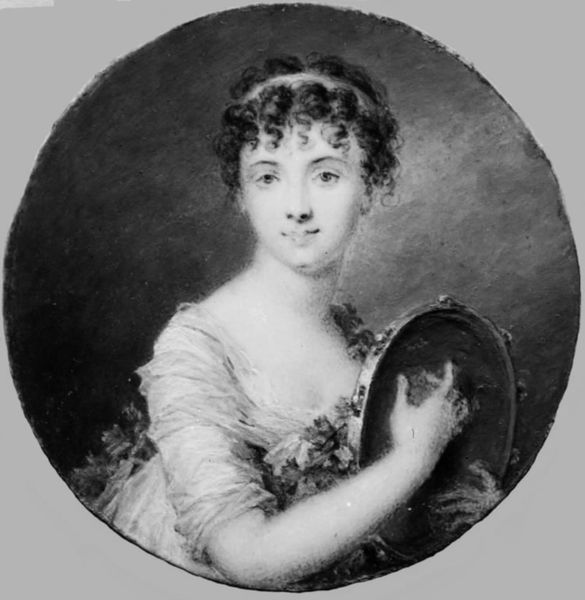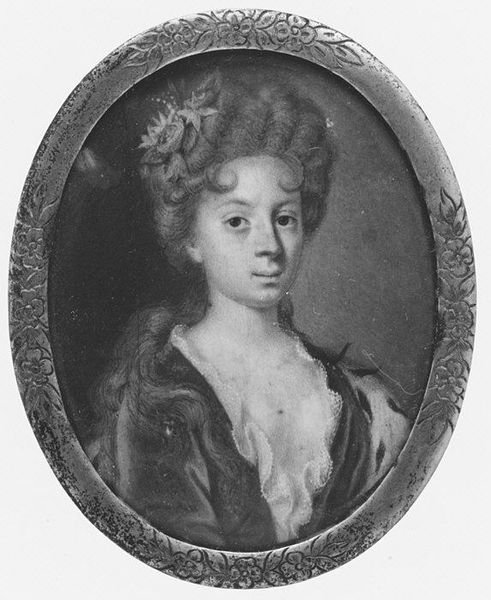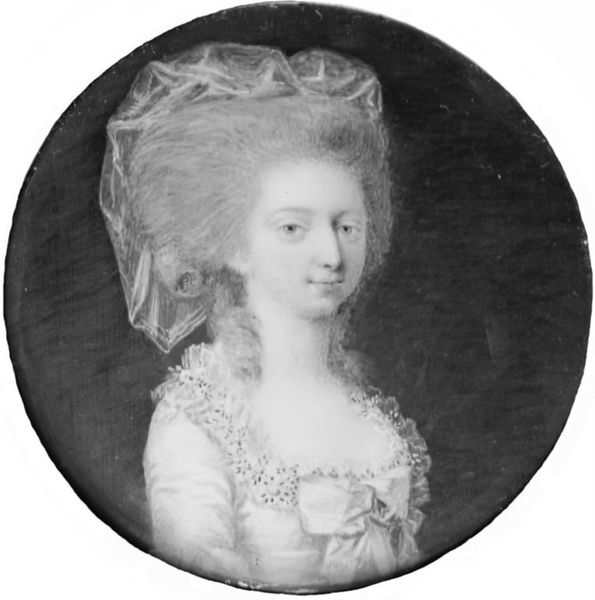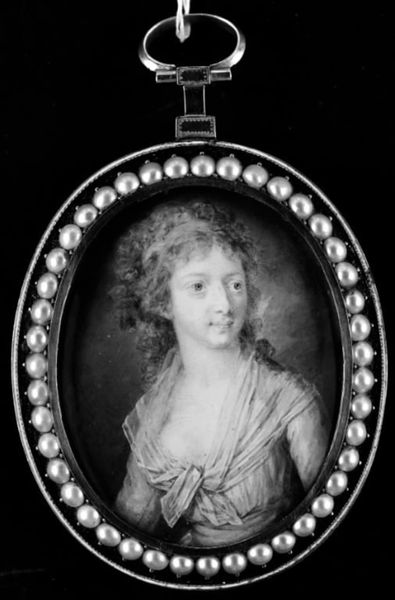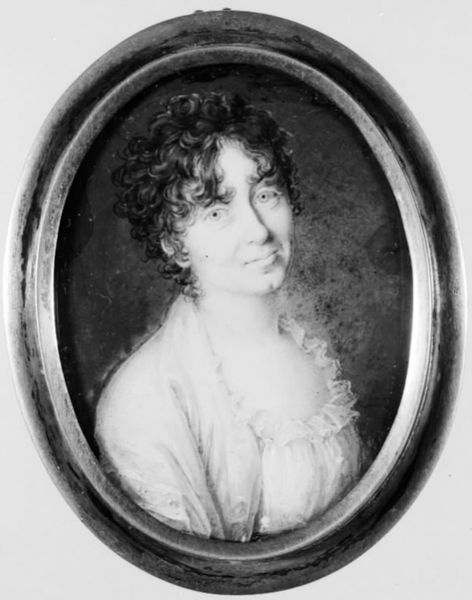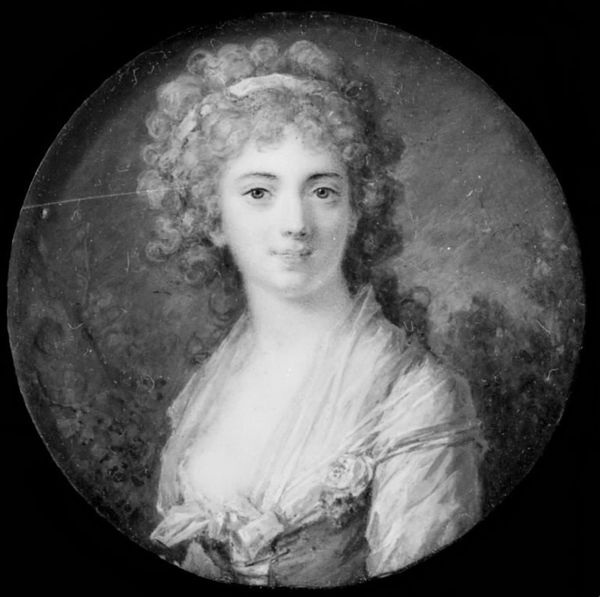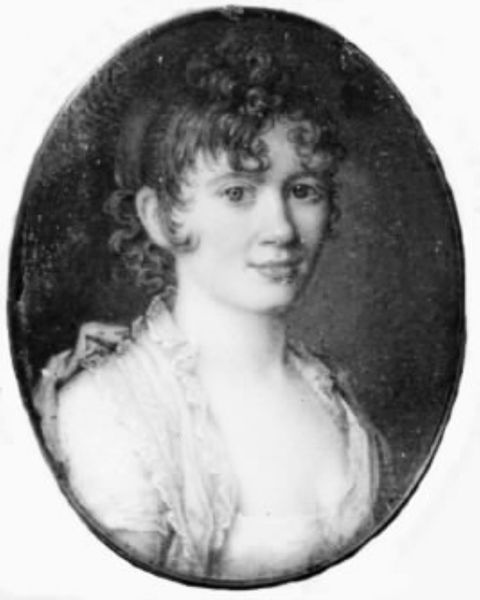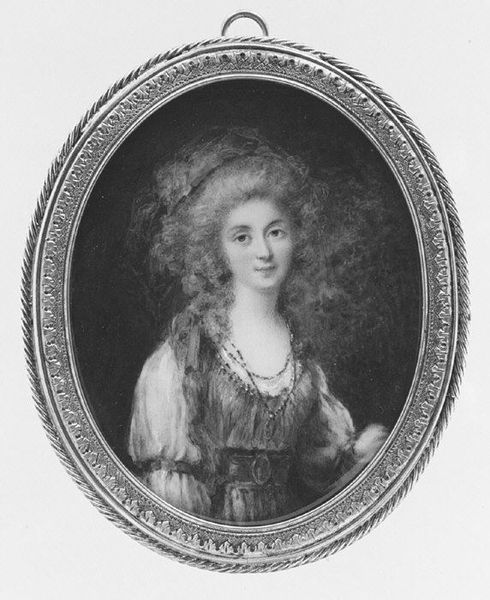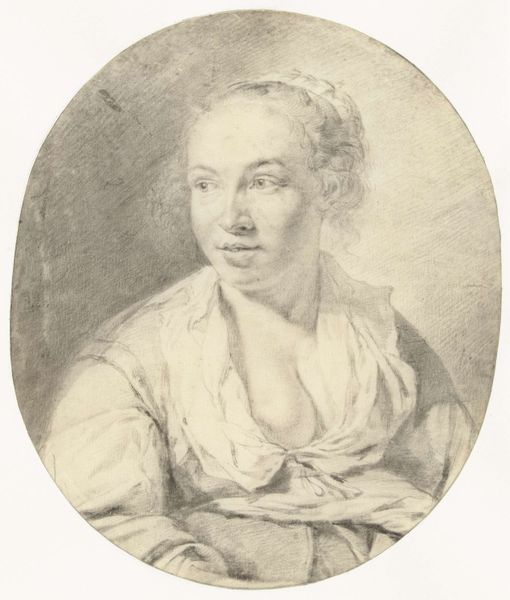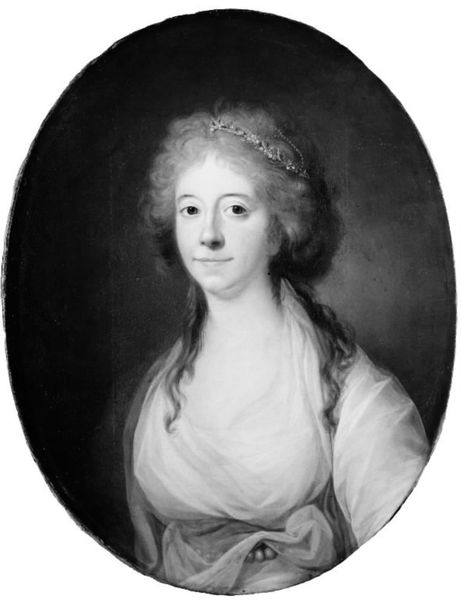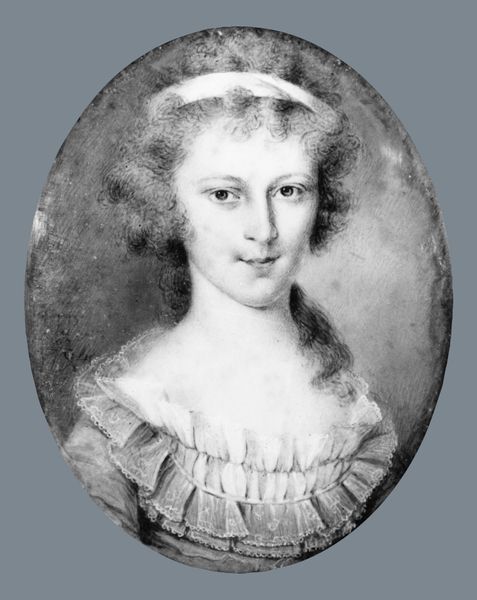
Dimensions: 4.2 cm (height) x 3.5 cm (width) (Netto)
Editor: This is Cornelius Høyer's "Kunstnerens datter, Adelaide," painted between 1756 and 1804. It’s a miniature portrait on ivory, currently held at the SMK in Copenhagen. The monochromatic palette gives it such a timeless quality; I find myself drawn to the intimate scale and soft lighting. What’s your perspective on it? Curator: Well, seeing as this portrait is rendered in monochrome and is such a miniature piece, I immediately start to think about the socio-political elements affecting portraiture at that time, and why an artist would select ivory for such a rendering. In this era, who had access to create and own such works, and what was the intention for a seemingly personal depiction, to capture a likeness meant for sharing or a token of love meant to remain private? Editor: That's an interesting point. I hadn't considered the implications of ivory as a material choice for this kind of portrait. Was miniature portraiture specifically tied to class or political power at that time? Curator: Absolutely. Ivory miniatures were luxury items, signs of wealth and status in the 18th century. The monochrome technique speaks to me of the limitations imposed on even luxury at this period, of subtle messaging about wealth in its purest form, so it begs to make me consider the political situation. A muted expression can tell volumes, how does this monochrome effect work, for you? Editor: It’s amazing to realize how seemingly simple portraits can hold so much historical and social context. The monochrome effect seems to add to the sense of formality, yet softens the gaze, giving the child a more earnest expression. Curator: Exactly. Consider how museums themselves reinforce this hierarchy through display. The context elevates our viewing, impacting the value assigned, isn't it? Editor: Definitely. It really shows how crucial understanding social and historical context is to appreciate art fully! I never would have picked up on those power dynamics if I hadn’t thought about who created, and, importantly, who could access the portrait, or even, what statement the materials themselves create. Curator: And that's how history shapes our perception of art, Editor! Every portrait carries its own political baggage; how society is reflected through artistic lenses for us to view and reconsider today.
Comments
No comments
Be the first to comment and join the conversation on the ultimate creative platform.
